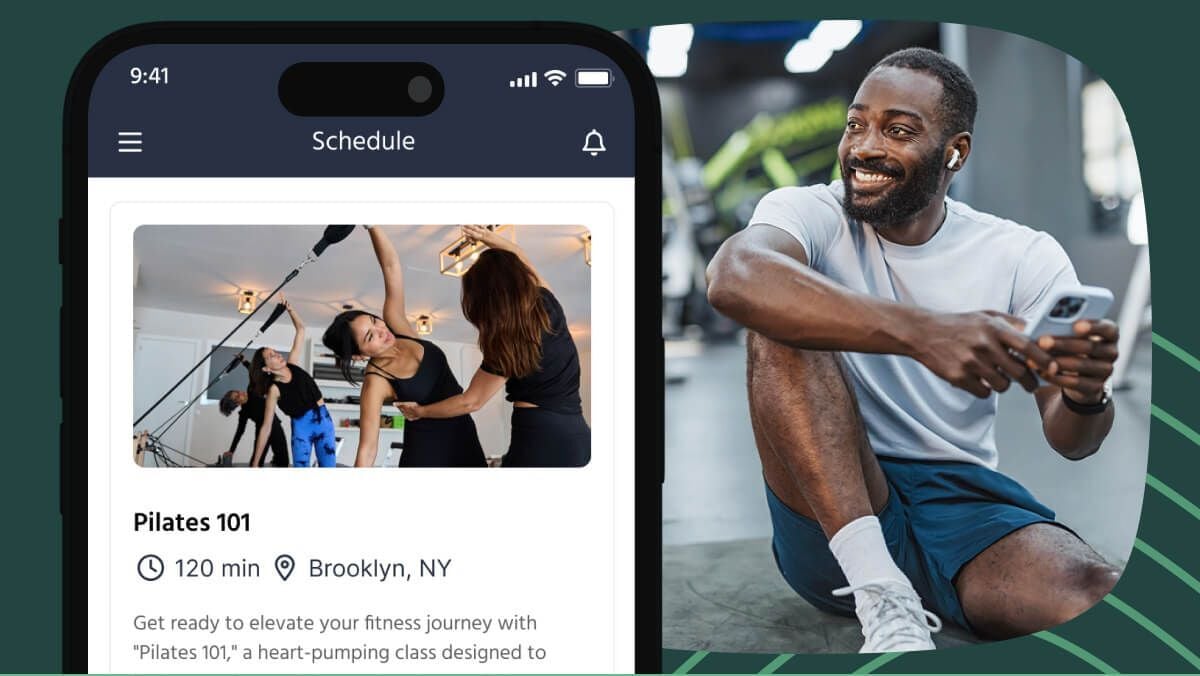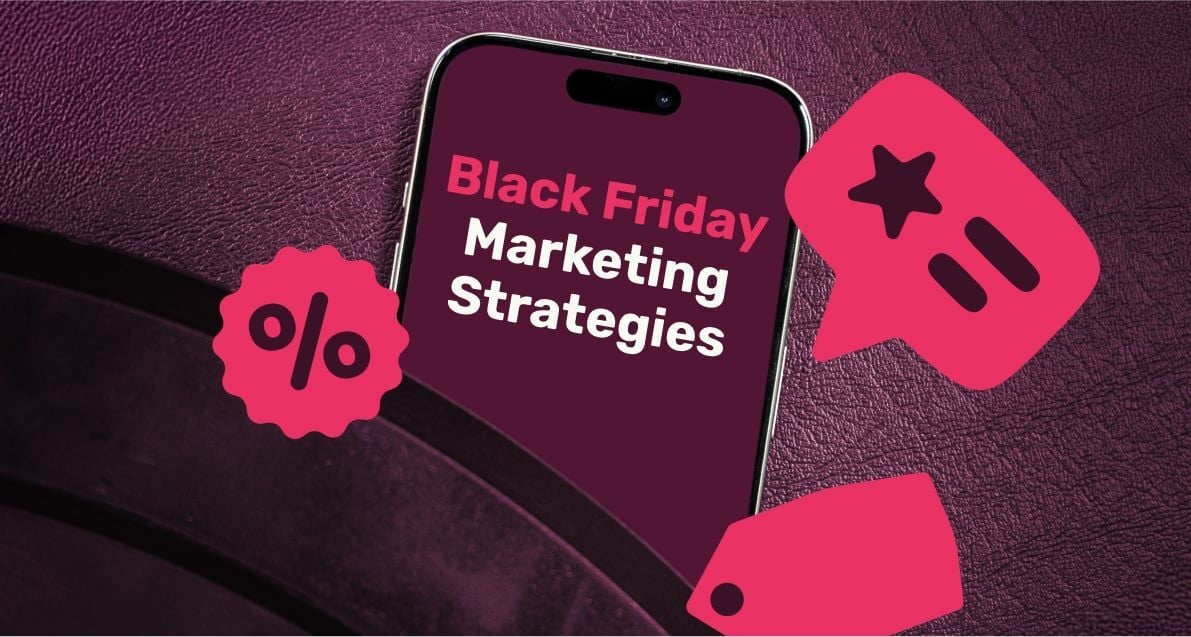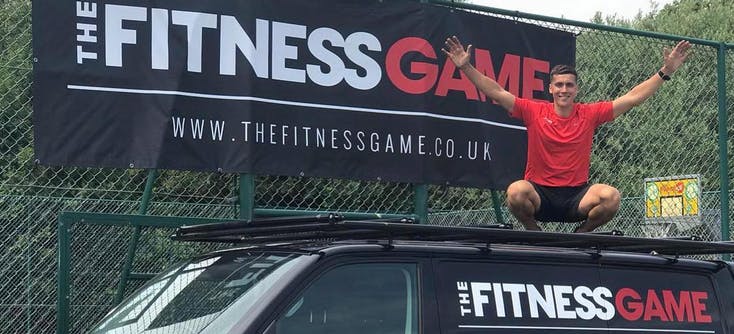Email marketing is consistently rated as the number one marketing channel for business owners. It's established, trusted, optional for customers, and a channel that is completely under your control. When you build up your Facebook page you don't really 'own' anything. It can be taken away at any moment. You own your own email lists and can take them with you even if you change your software. And, email has a much higher conversion rate than social media.
In this article, we dive into why you should invest in email marketing, why your customers will appreciate it, and how to go about it the right way.

TeamUp provides integrations for several email platforms as well as offering a lot of powerful options for automating based on customer behaviour. It's important that you know about email marketing and how it can benefit your business. It's not only a valuable source as a business owner, but it's a great way to communicate with your customers.
That said, so many business owners get it wrong. They annoy customers or muddle the message. Their emails don't lead to a higher customer rating or more sales. That kind of emailing is a waste of time. So, here are the most important things to know so you can make it work for you and your customers.
What is email marketing?
Email marketing is using email to contact your customers, prospects, or the wider community. It is most effectively used to build relationships and promote your business directly to your network.
Email marketing uses email service providers that allow marketers to create bulk email lists, target certain segments, and build your network. These email providers also give reports about each campaign, like who opened the email and what links they clicked. This information helps marketers make decisions about how to segment their contact list or what kind of emails to send in the future. When used most effectively, email marketing can help you convert interested prospects into customers and turn them into loyal clients for life.
Email marketing is super powerful. Marketing without email is like working out without eating protein. You can do it but it's won't be as effective as quickly. So, let's cover the basics quickly.
Where to begin
Email marketing requires two things:
- A message
- An email service provider (like MailChimp, Active Campaign, HubSpot, Constant Contact, Drip, Substack, and many others).
The most important part about email marketing is knowing what you want to say, and knowing what action you want your audience to take.
Do you want them to check out your latest published guide or blog article?
Collaborate on a new partnership opportunity?
Check out the latest features and company updates?
Follow your social media accounts?
Each email you send should have one main audience, one clear message, and one clear call-to-action (the thing that you want your audience to do).
Emails are not advertisements. They are opportunities to teach — and to learn. To market your business using email, use an email service provider that can show you who opened the email and when, and what they clicked on once they read it. The behaviour of your readers will guide your future content.
How to build an email list around your customers
Using fitness professionals as an example - there is so much content to talk about! A person's relationship with fitness is a constantly evolving educational journey. You can be there for that! You can encourage it! You can even facilitate it! This puts you in a fun and even inspirational position: as the email marketer of a fitness business, you become the curator of stories, anecdotes, and lessons for people who want to learn about your specific take on fitness. So, who's your audience? It could be as niche as "people who like to do yoga with goats" or as wide as "people with bodies." Awesome!
Let's dive in.
How to build an email list for free
To start building your email list, you'll want to announce that you're starting a newsletter. You can announce it on social media, in person, at conferences, and in a private email to friends and family. The standard rule for this announcement is to do it once and GO BIG, but after that, you'll seem pushy. So, make that announcement count!
In every announcement, you'll want to link to a "landing page," a webpage dedicated to getting newcomers to sign up for your newsletter. This webpage could be as simple as a blank page with a sign-up form, or it could be designed around convincing new visitors to sign up (the possibilities are endless). Some marketers prefer a long-form copy on their newsletter landing pages. Others rely on their initial posts to get folks to sign up. We've done it all ways, including running Facebook ads that allow people to sign up without clicking away from the post. Our advice is to try out different platforms and environments to see which one can help meet your needs.
Once you have your initial audience, you can send out your first email. Congratulations! You've begun.
How to grow your email list
It's one thing to send out emails and hope they get shared. It's another to actively grow your list. Here is a list of things that you can do to build your email audience:
- Ask readers to share your email on their social sites. Often, email service providers will have templates with share buttons already designed into the email making it easy for you to click, share, and post.
- Share the email content out to your social channels. With MailChimp, you can share a version of the email as a web page. If you can't or don't want to do that, you can just copy/paste the message right onto your social channels. Make sure to add a call to action to sign up at the end of the post with a link to the signup landing page.
- Put the link to sign up for your newsletter in your social media bios.
- Every time you give a presentation to a group, mention that you have a newsletter (e-blast, journal, bulletin, or whatever you want to call it) and the website URL where they can sign up.
- Whenever you sign up a new customer, ask them if they would like to receive notifications when you have sales, emails about nutrition or fitness, or whatever else might be in your emails. You can do this automatically with TeamUp.
Building your email list requires being a bit creative, yes. But more importantly, it requires you to be consistent. Lists take a while to build, so be patient and keep at it.
How to segment your customers the smart way
If you have a larger list, it's likely that you have a few smaller segments within it. At TeamUp, we generally have two groups who we send different emails to prospective customers and customers. Both groups get the same messaging most of the time unless there's a product update that customers need to know about (not for prospective customers) or a message about the very basics of TeamUp (not for customers). Sometimes, we'll share the same message to both groups but tweak the call to action at the end.
If you want to segment your email list, be warned: this leads to more work. We find that it's practical to keep it unsegmented for as long as it makes sense. When you do start to segment, keep it simple.
Segmenting can be incredibly powerful. It helps you to tailor messaging to make sure that readers know they got the right email, and that they're the ones who are supposed to be reading it. Segmenting your customers is different on every platform. With TeamUp, you can trigger different segmenting through Zapier.
How to break customers into groups so that you can tailor messaging
One of the most powerful TeamUp features is memberships. With memberships, you can control payments and class allowance in one place. They also allow you to easily segment your customers. Everything from trials to retentions is made more powerful by this feature. And it links perfectly into Zapier for you to be able to export that insight into your email platform.
We also have a native Mailchimp integration so you can create segments by simply using the filters on your customer list and then sending it to a new email list. You can do the same with any email system by downloading a list with your segment in it.
Even better, across the whole system, you'll see a mail icon. This allows you to quickly grab and make a segment with any group you like - Tuesday attendees of Beginners? Wednesday regulars? It's powerful and simple to do.
How to differentiate messaging
If you are sending emails to your different segments, you will want to differentiate the message a little bit if you are including any type of update, announcement, or call to action. Consider using a friendlier tone with your clients, they know you best, and introducing your fun and friendly side while remaining professional with your prospects. You may use phrases like, "It's us again, thanks for checking out another one of our newsletters," when sending an email to your customers, and something like "Thanks for checking out another one of our newsletters, we hope this information can help steer you in the right direction," for your prospects. Your message doesn't have to change, but tailor your approach to make sure your audience can get exactly what they need from your email.
What is the best time to send your emails?
When should you send emails? How frequently should you send emails? Do you automate your emails or send them in batches to everyone? These are some of the most common questions that email marketers have when they first start out. The answer, in our opinion, is that is doesn't matter too much. Everything can be optimized, so if you're really curious, you can test your open rates depending on time of day, day of the week, or whatever you're wanting to measure. But, this is not something you need to worry about in the beginning.
What we do suggest is automatically sending the first few emails to "onboard" newcomers to your email sequence. Help them understand what to expect, introduce them to you, your business, and your content. Tell them where to find out more about you, and even ask them to reply with information about themselves. Share your social channel links and blog link with them so they can look for more information between emails. After that, you can continue automatically sending emails or send out campaigns one by one to everyone. It all depends on your workflow and how you need to work.
Timing can make a difference. If you send you an email at the beginning of a long weekend, it might get a lower open rate. But, It's much more important to get the content right. So we recommend starting there and choosing your send times as you get into the swing of things.
How to stop unsubscribes from your email newsletter
It's rare to have a newsletter that doesn't receive a fair share of unsubscribes. This is normal and good. If you're asking how to stop unsubscribes from your newsletter, the answer is: you don't!
Unsubscribes are super helpful. For one thing, you don't want anyone on your mailing list who doesn't want to be on it. It messes with your open and click rates, and gives you unclear feedback on your campaigns. More importantly, it actually hurts your relationships with your community over time to have subscribers who are annoyed every time they see your name in their inbox.
The thing to watch out for with unsubscribes is sudden spikes. If you send an email out and have an extra-large number of unsubscribes, chances are something has changed in your content. Did you send something that didn't align with the usual message? Did you surprise readers with a new and unwelcome thing or update?
With email, consistency is everything. Tell subscribers what to expect, and then give them exactly that. As an email marketer, you are in a position that you could abuse (by sending spam messages, selling email addresses, or sending poor quality or bad content). To build trust, make sure to communicate what the newsletter is about and then follow that to the letter.
Instead of worrying about unsubscribes, you could even go so far as to encourage people to unsubscribe if your content is not right for them and ask what you could improve when they unsubscribe. This builds respect and reciprocity within your email audience. It forces you to be consistent and keep quality high, and it gives a little of the power you have to your readers, further inspiring trust.
Creating newsletters
Building newsletters from scratch is one of our favourite things to do. Yes, we write a lot about software and features and businessy things, but our newsletters always pivot on one central premise: that human nature is an enchanting and never-ending mystery, and fitness is a wonderful place to explore it. We've tried to build our product features around how people think and how to best help. So, our newsletter follows that same logic: we want to feature the parts of human stories that bring out the most interesting lessons and learnings for us.
What are you going to write about? Only you can know. Let's talk about it...
The anatomy of the perfect email newsletter
The standard rule for newsletters is that you should write every email to one person or audience, that you should have one message, and that every email should only have one call-to-action. So, where do you start?
If you're writing on behalf of a fitness business, you'll want to talk about your business' focus, of course. But, we'd encourage you to think about what makes you unique within your field. Think outside the box. Did you study fashion in school? Do you have a passion for cooking? Do you teach children how to garden? Whatever it is that you most enjoy thinking about or doing (even if it's just "I like to grow my muscles"), find that passion and apply it to your newsletter. That's where the perfect newsletter comes from: the most interesting corners of your brain.
At TeamUp, our newsletters tend to have stories about children and growing up. Lots of us have kids in our lives, and we often laugh about the funny stories we have about them and how these stories relate to our own childhoods. Children provide us with, among many joys and frustrations, a fresh insight into human motivation. Thinking about their quirks and surprises helps to give life to our writing.
Whatever it is that makes you tick. Whatever brings you joy (thanks Marie Kondo), write it!
How to create an email newsletter
Everything about a newsletter is up to you. We know one writer who refuses to use capital letters in his emails, even for names. Another uses a lot of GIFs and links to random news stories that she finds funny. Yet another just writes short stories and doesn't have a salutation or a call to action. She just publishes and if her readers like it, great.
You can do almost anything! But that's not helpful, is it? Let's start with a template:
Emails usually have a salutation. Hi [Name], or even just "Hi" is a good, human way to start. Sometimes at TeamUp, we mix it up and just start with a line from a story. That's ok too (and helpful for email previews) but consistency is always good.
The introduction to your email should be clear and to-the-point. If you're telling a story, tell it. If you're sharing a promotion, let folks know. The faster you get to the point, the less likely your email will end up in the trash.
Once you have your reader's attention, you can slow down a bit. For longer emails, we sometimes use headings. For shorter emails, we'll just say what we need to say.
Remember, the strongest emails have one message. So, you don't need to do too many things. But, if your message can be expressed creatively with a longer email, we say go for it - you'll learn soon enough what works for your audience and what doesn't.
Finally, the call-to-action helps your reader know what to do with the new information you've just given them. And, it helps you measure how convincing your copy was. Include a call to action if you want them to do something, anything, to get them one step closer to being a regular, loyal customer or reader.
The sign-off is where you can be yourself. We often will say "thanks for reading" because we are truly grateful to have folks read our newsletter. Other times we'll introduce the information we'll share in the next email.
However you design your emails — whether they have videos, gifs, plain text, or pictures of your dogs — know that your readers are going to want to read what you have to say and that they've signed up for you. So, be yourself and enjoy what you're writing.
How to avoid fears that prevent you from sending a great email
Are you afraid that you'll mess up? That you'll accidentally send a blank email, or that no one will read it, or that 'gasp' there will be a typo? Yes, we get it. We've all been there. Starting email marketing feels a bit like jumping into a pool. You have to trust your ability to swim.
But take it from us, whatever mistakes you might make, they've been done before by countless other people. And, your readers will understand. Accidents like hitting the wrong button and sharing your template instead of the actual email and other silly things are forgivable. (Just avoid selling data or using their email addresses for purposes other than your email marketing, that's a no-no.)
Fear of rejection drives a lot of business owners' fear of email. What if someone hates the email? What if they unsubscribe? Yup. Your email has to be useful or entertaining. Claire's grandmother used to have a saying: "if it's neither useful nor ornamental, it doesn't belong in my house!" That basic rule applies to email marketing too. Don't send it just to send it. At TeamUp, we subscribe heavily to this philosophy, which is why we have so many unsent email drafts: they just didn't make the cut.
If you can't make your email relevant and appropriate, then there is no point in having the email in the first place. Don't worry about it, and wait until inspiration hits.
Example of a perfect email about a new class
If you were writing to your customers about a new class, you might use copy like this:
Dear [Name]
Sitting at the computer all day, it's easy to start to curl over. If your clavicles and shoulders are starting to pinch and ache, now is the time to open your chest.
That's why we're launching a new class: the anti-computer stretch and open class.
At 5 pm on Wednesdays, right in the middle of the workweek.
Sign up here -> TeamUp link
Looking forward to seeing you!
Susan
If you were writing to a prospective customer about joining your gym, you might use copy like this:
Dear [Name]
Looking to hop back on the fitness wagon? At (name of the gym) we are offering
- Unlimited Classes
- Access to all fitness facilities
- 1-1 personal training sessions
and more, all for (the price of membership) a month. If you are interested in embarking on your fitness journey, we'd love to welcome you to start with us.
Looking forward to hearing from you!
Susan
Now that you know how to send the perfect email and how it can help your fitness business and relationship with your customers, it's time to get writing. Remember, make them easy to read, fun, and informative. This is your opportunity to show your customers another side of you, and there are many ways to get it right.
Looking for more tips? Send us a draft of your email at newsletter@goteamup.com and we will help you get it right. For more information on TeamUp's integrations check out our page, here.
Thanks for reading!









